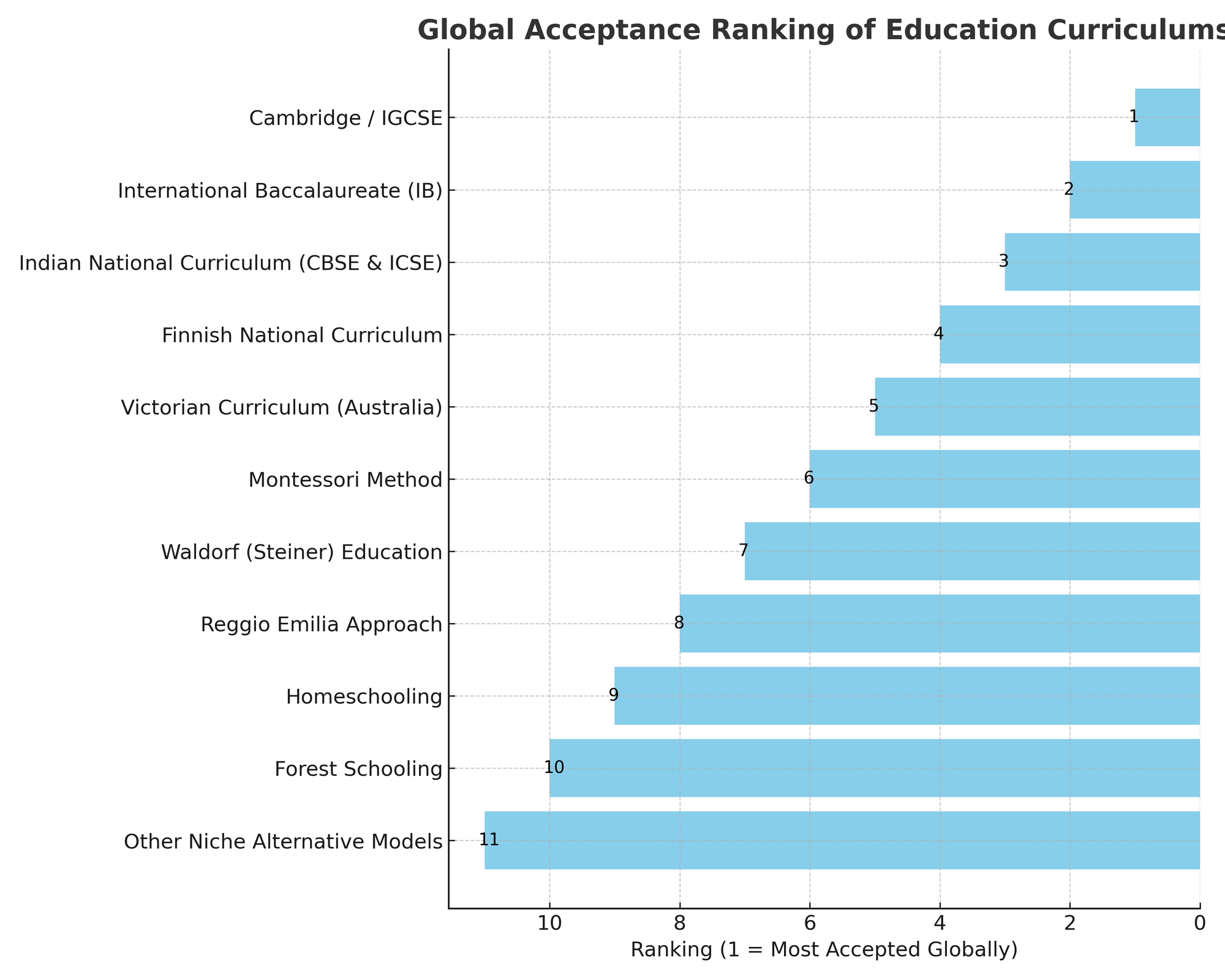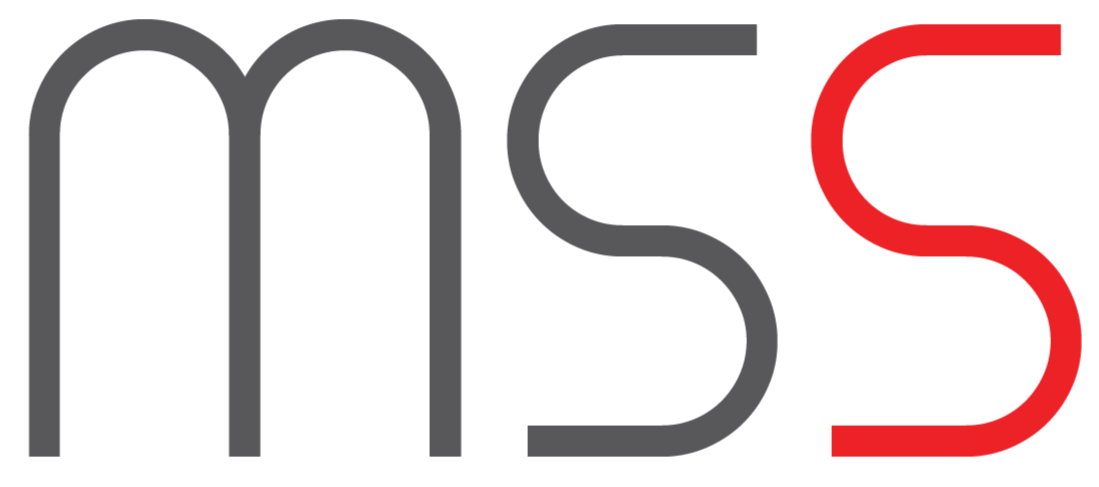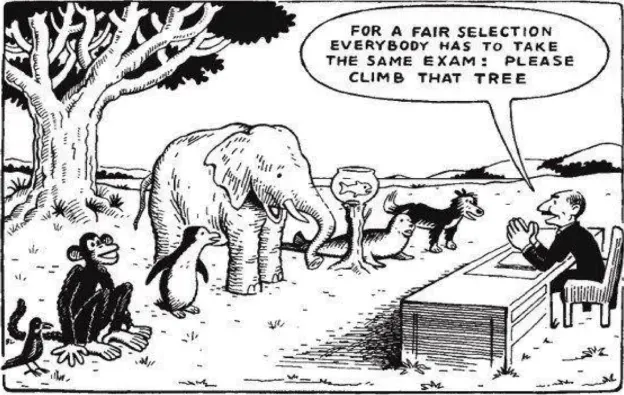Education across the world has taken many forms, shaped by culture, philosophy, and the changing demands of society. From traditional textbook-heavy systems to innovative approaches like Finland’s learner-first model, each method carries a unique perspective on what children should learn and how. For parents, educators, and policymakers, understanding these diverse models is essential to making informed choices about the future of schooling.
Here’s a deep dive into the major education methods and curriculums, their strengths, limitations, and where they stand on the global stage.
1. Traditional / Conventional Curriculum (CBSE, ICSE, State Boards, AP, GCSE)

Traditional education remains the backbone of most countries. It is characterised by structured classrooms, teacher-led instruction, subject divisions, and standardised testing. The model emphasises discipline and academic achievement, often with high-stakes exams defining success.
Strengths:
- Builds strong foundations in math, science, and languages.
- Globally accepted by universities and employers.
- Clear structure and measurable outcomes.
Limitations:
- High exam pressure, leading to stress.
- Rote-based learning with limited creativity.
- One-size-fits-all, less accommodating to diverse learners.
Global Standing: Dominant in Asia, UK, and much of the world.
2. Montessori Method (Italy, early 1900s)

Developed by Dr. Maria Montessori, this approach emphasises independence, exploration, and self-paced learning. Children engage with specially designed materials in mixed-age classrooms, with teachers acting as guides rather than instructors.
Strengths:
- Fosters independence, curiosity, and self-discipline.
- Encourages hands-on, experiential learning.
- Develops intrinsic motivation.
Limitations:
- Less structured in higher grades.
- Risk of academic gaps without teacher intervention.
- Works best in early years, harder to apply for older students.
Global Standing: Highly popular in preschools and early childhood centers worldwide.
3. Waldorf / Steiner Education (Germany, 1919)

Founded by Rudolf Steiner, Waldorf education takes a holistic approach that integrates academics with arts, storytelling, rhythm, and emotional growth. It emphasises imagination and creativity while delaying formal academics until later years.
Strengths:
- Strong emphasis on creativity and imagination.
- Nurtures emotional and social growth alongside academics.
- Provides a stress-free early learning environment.
Limitations:
- Delayed start to reading and writing.
- Less aligned with technology and competitive exams.
- Sometimes considered overly idealistic.
Global Standing: Popular in Europe, the US, and alternative education circles.
4. Reggio Emilia Approach (Italy, post-WWII)

Emerging in a small town in post-war Italy, this approach views children as active participants in their own learning. With project-based exploration, multiple forms of expression (“100 languages of children”), and deep parental involvement, Reggio schools encourage inquiry and creativity.
Strengths:
- Encourages collaboration and critical thinking.
- Strong parental involvement.
- Promotes creativity through diverse modes of expression.
Limitations:
- Resource-intensive, harder to scale.
- Less structured in academic rigour.
- Mostly suited for early childhood education.
Global Standing: Respected worldwide, especially in preschool education.
5. International Baccalaureate (IB – Switzerland, 1968)

The IB program is designed as a globally recognised curriculum that balances academic rigour with holistic development. Its three programs (Primary Years, Middle Years, and Diploma) encourage inquiry-based learning, global awareness, and research skills, making it a passport to higher education worldwide.
Strengths:
- Recognised by top universities globally.
- Emphasises research, critical thinking, and global perspectives.
- Balances academics with extracurriculars and social responsibility.
Limitations:
- Expensive and resource-heavy.
- Demanding workload, especially in the Diploma Programme.
- May not fully align with national entrance exams.
Global Standing: Prestigious and widespread in international and elite schools.
6. Project-Based Learning (PBL – US & Finland influence)

Rather than focusing on memorisation, PBL immerses students in real-world projects that require collaboration, problem-solving, and creativity. Knowledge from different subjects is applied in meaningful ways, bridging theory with practice.
Strengths:
- Promotes teamwork and engagement.
- Connects academics with real-world application.
- Fosters innovation and problem-solving.
Limitations:
- Difficult to measure outcomes in standardised ways.
- Requires highly trained teachers.
- Risks shallow coverage of core content if not balanced.
Global Standing: Growing in progressive schools across the US, Europe, and Asia.
7. Homeschooling & Unschooling (Global Movement)

These approaches remove the formal school structure, allowing parents (homeschooling) or children themselves (unschooling) to guide learning. With flexibility at its core, learning is adapted to the child’s pace, interests, and environment.
Strengths:
- Highly personalised and flexible.
- Encourages passion-driven exploration.
- Safe environment for unique learners.
Limitations:
- Limited peer interaction.
- Academic coverage depends on family resources.
- Variable acceptance in higher education systems.
Global Standing: Expanding in the US, Europe, and increasingly in urban India.
8. Forest Schools / Outdoor Learning (Scandinavia)

Originating in Denmark and Sweden, Forest Schools emphasise outdoor exploration, resilience, and nature-based learning. Students spend a significant portion of time outdoors, learning through play, discovery, and interaction with the natural world.
Strengths:
- Builds resilience, teamwork, and confidence.
- Improves mental health and reduces stress.
- Encourages physical activity and independence.
Limitations:
- Geography and climate dependent.
- Requires supplementation with academic learning.
- Less practical in urban, exam-driven societies.
Global Standing: Strong presence in Scandinavia, niche elsewhere.
9. Finnish National Curriculum (Finland)

Finland is often cited as a global model for education success. Its national curriculum emphasises equity, personalised learning, minimal standardised testing, and strong teacher autonomy. Play-based learning is central in early years, with a late start to formal schooling at age 7.
Strengths
- Focuses on well-being, equity, and minimal academic pressure.
- High trust in teachers, with strong professional autonomy.
- Balanced approach combining academics with life skills.
Limitations
- May not align well with exam-heavy systems in other countries.
- Less focus on competition and grades can be a challenge for global mobility.
- Requires a strong welfare state to support the model.
Global Standing
- Highly respected worldwide as an education benchmark.
- Less exported directly; more used as inspiration in reforms.
10. Victorian Curriculum (Australia)

The Victorian Curriculum is a comprehensive framework guiding what students learn from Foundation (prep) to Year 10 in Victoria, Australia. It emphasises both subject knowledge and general capabilities such as critical thinking, ethical understanding, and intercultural awareness.
Strengths
- Clear learning outcomes across all stages.
- Strong focus on literacy, numeracy, and future-ready skills.
- Integrates general capabilities with subject learning.
Limitations
- Limited recognition outside Australia.
- Can be rigid compared to international frameworks.
- Assessment approaches vary widely across schools.
Global Standing
- Strong within Australia; limited international footprint.
- Serves as a model for competency-based curricula.
11. Cambridge / IGCSE Curriculum

The Cambridge curriculum, delivered by Cambridge Assessment International Education, is one of the most widely adopted international curricula. Its flagship program, the International General Certificate of Secondary Education (IGCSE), caters to students aged 14–16, followed by AS and A Levels. It emphasises academic rigor, global perspectives, and flexible subject pathways.
Strengths
- Recognised by universities and employers worldwide.
- Wide range of subject choices.
- Balanced focus on academics, critical thinking, and practical application.
- Strong assessment framework combining coursework and examinations.
Limitations
- Can be stressful due to academic rigor and exam orientation.
- Requires significant resources, trained teachers, and exam fees.
- Sometimes seen as more academic than holistic.
Global Standing
- Among the top 3 most recognised school curricula globally.
- Widely followed in Asia, Middle East, Africa, and Europe.
- Considered a “gold standard” for academic pathways.
Global Acceptance Ranking of Education Curriculums

1. Cambridge / IGCSE
- Adopted in 10,000+ schools across 160+ countries.
- Universally recognised for university admissions and global mobility.
- Seen as a gold standard alongside IB.
2. International Baccalaureate (IB)
- Followed by 5,700+ schools in 160+ countries.
- Prestigious and highly valued by top universities worldwide.
- More selective and expensive than Cambridge, hence slightly less in numbers.
3. Indian National Curriculum (CBSE & ICSE)
- Among the largest by numbers (30,000+ CBSE schools globally).
- Dominant in India and Indian diaspora schools abroad.
- Limited in global recognition compared to IB/Cambridge.
4. Finnish National Curriculum
- Global benchmark for progressive education.
- Widely admired and studied, but directly implemented only in Finland and a few pilot schools abroad.
- High influence, moderate adoption.
5. Victorian Curriculum (Australia)
- Official curriculum across Victoria, Australia.
- Strong regional presence, limited global footprint.
- Acts as a reference for competency-based frameworks internationally.
6. Montessori Method
- Implemented in 20,000+ schools worldwide, especially in early childhood.
- Well accepted for preschool, but less common beyond elementary.
- Seen as a foundation-builder, often blended with mainstream schooling.
7. Waldorf (Steiner) Education
- Adopted in 1,200+ schools across 70 countries.
- Recognised for its creativity and holistic ethos.
- More niche compared to Montessori.
8. Reggio Emilia Approach
- Highly influential in early years, especially in Europe, US, and Asia.
- Directly followed in fewer schools but widely used as an inspiration.
- Rarely applied to secondary or higher education.
9. Homeschooling
- Growing rapidly post-pandemic, especially in US, UK, Australia, and India.
- Flexible but lacks universal recognition.
- Acceptance improving with online platforms and standardised exam pathways (like SAT/IGCSE for homeschoolers).
10. Forest Schooling
- Strong presence in Scandinavia, UK, and Germany.
- More of a supplementary model than a stand-alone curriculum.
- Niche but gaining attention globally as a wellness-focused approach.
11. Other Niche Alternative Models (localised / hybrid)
- Smaller, localised approaches inspired by progressive philosophies.
- Limited acceptance beyond their cultural/geographic boundaries.



